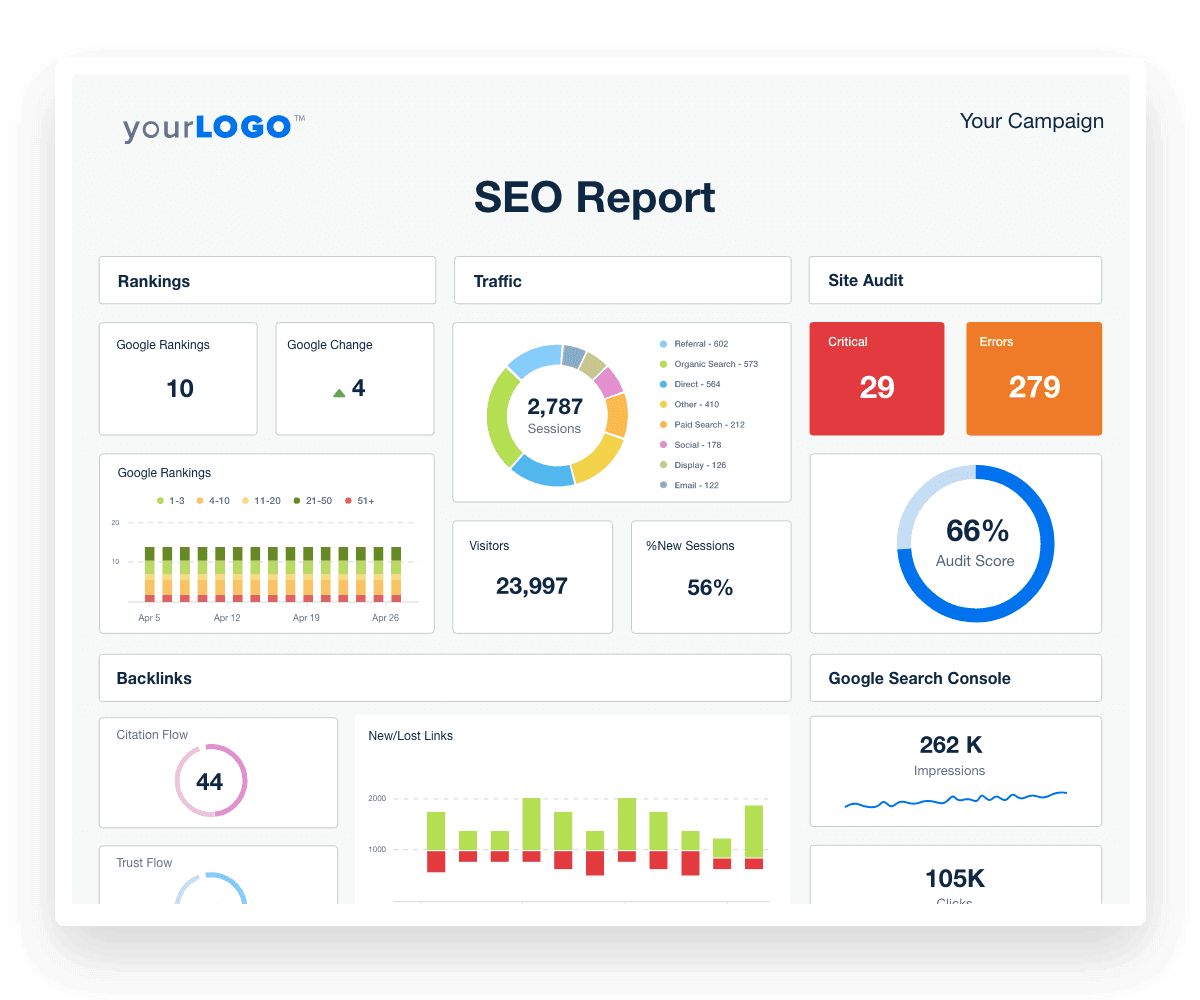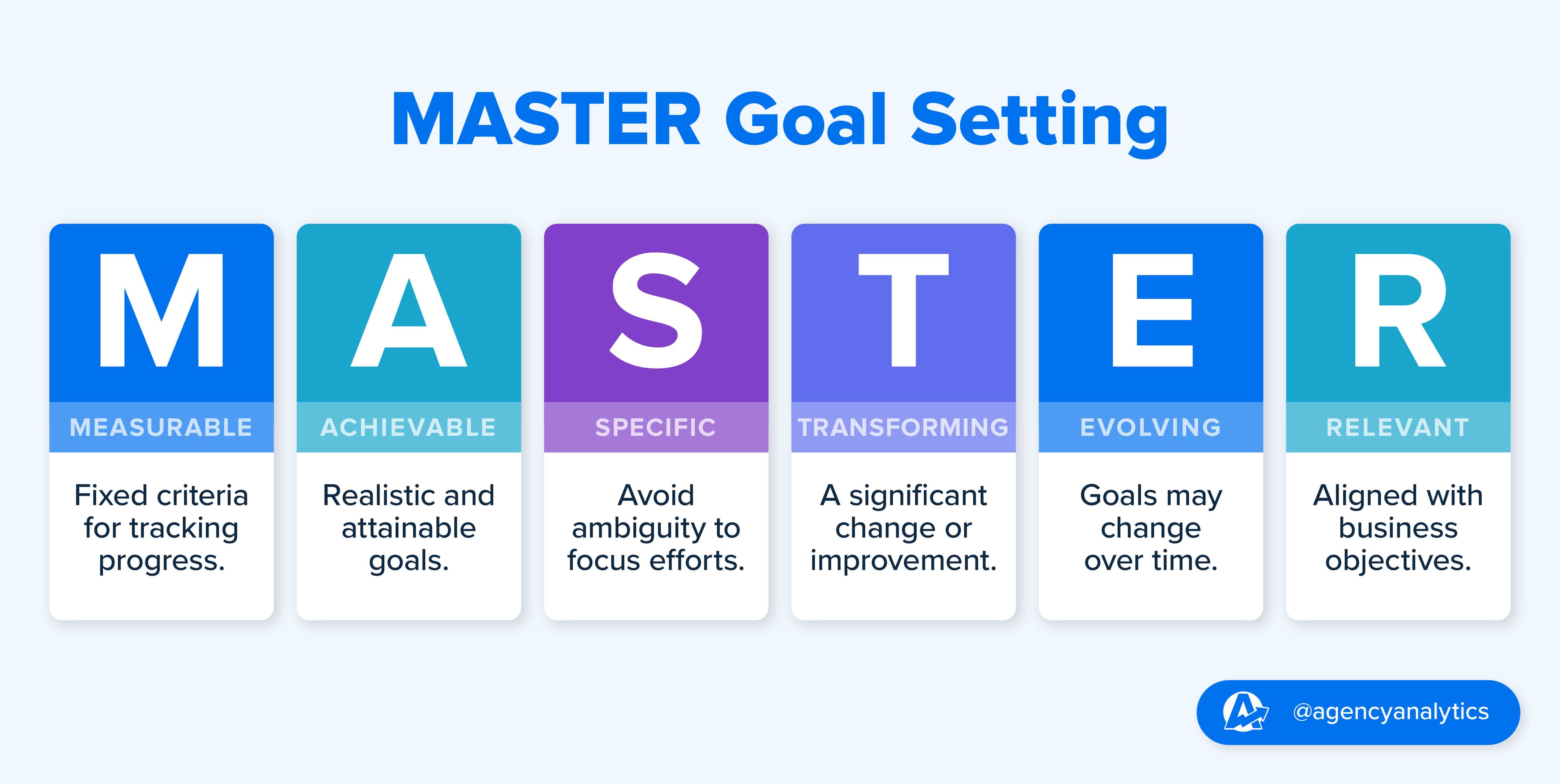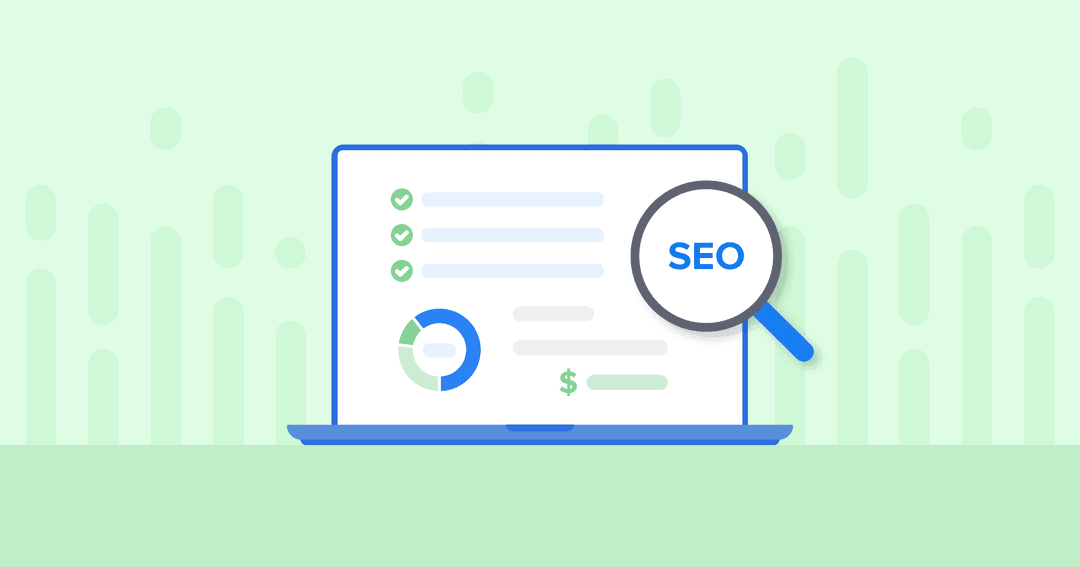Table of Contents
QUICK SUMMARY:
An SEO budget caters to the specific needs of different clients, ensuring resources are allocated efficiently for the best results. Tailoring budgets to individual client goals and challenges is very important to gain trust and long-term scalability. This article offers insights on crafting a results-driven SEO budget, complete with a useful checklist for marketing agencies. We cover the importance of evaluating client objectives before budget planning, aiming to enhance the effectiveness of SEO strategies.
Managing multiple clients—each with unique SEO needs—can make you feel like you’re precariously spinning dozens of plates in the air. What’s the secret to simultaneously managing SEO finances for a small local bakery, versus a global ecommerce retail store—which are two very different businesses with different SEO needs?
Creating a one-size-fits-all SEO budget plan just won’t cut it. Instead, opt for a made-to-order SEO budget that will meet each and every client’s needs.
A tailored SEO budget empowers you to address each client’s unique challenges and goals with precision, justifying your expertise and securing ongoing trust. You’ll also be able to allocate resources wisely. This ensures profitability and agency scalability, which help optimize your agency’s efficiency.
In this article, learn how to create a results-oriented SEO budget, and gain access to a free checklist to help your SEO agency improve your SEO budgeting process for clients.
Assessing Client Needs and Goals
Before you get started with budget allocation, conduct a thorough assessment of your client’s needs and goals. Remember, each client has their own unique objectives and challenges. Evaluating their goals before jumping into an SEO budget plan will improve the effectiveness of your search engine marketing agency’s final plan.
Methods for Evaluating a Client’s Current Digital Presence
Take a deep dive into your client’s current website SEO performance using tools like Google Search Console and SEMRush. Look at:
The SEO health of their current website
The industry and competitive landscape
Keyword research and targeting
Local vs. international SEO
After analyzing their existing SEO campaign, we see that minimum SEO work has been performed. Our next question to the client is usually what is their current SEO budget that they are spending. In most cases, it's just a few hundred dollars per month, and in most cases, it is simply not enough to deliver meaningful results or compete in their niche.
Anatoly Zadorozhnyy, CEO, Marketing 1on1
Current Website’s SEO Health
Looking at website elements such as keyword rankings, on-page SEO, and technical SEO will give you an idea of how to allocate the budget for search engine optimization.
For example, maybe you have a client in the hospitality industry who wants to increase website traffic and eventually increase bookings for their boutique hotel. A comprehensive SEO assessment will help you narrow in on what they need to work on (for example, their website might lack mobile optimization or have poor site speed). Then, you’ll be able to tailor the SEO budget to prioritize filling in those gaps.

With just a few clicks, generate a comprehensive, custom SEO dashboard for clients to view 24/7. Try AgencyAnalytics free for 14 days.
Industry and Competitive Landscape
Next, look at market trends, competitor strategies, and industry SEO trends. This will help you identify opportunities and challenges that might impact your client’s SEO efforts.
For instance, for an insurance broker client, your agency may determine that competitors keep an up-to-date blog detailing relevant industry concerns pertaining to each season. You might suggest launching and maintaining a vibrant blog that will engage readers while also acting as a beacon for inbound leads via keyword optimization.
Keyword Research and Targeting
Consider your client’s current keyword strategy and identify high-value keywords that align with both their business objectives and their target audience. Starting with bottom-of-the-funnel keywords may be helpful because these keywords push people to take a key action. Alternatively, if your client is in a brand-new or a niche market, starting with top-of-the-funnel keywords might be best to help educate customers before making a sale.
Local vs. International SEO
Some businesses, such as a restaurant or a hair salon that only serve people in a certain geographic area, benefit most from a focus on local SEO (for instance, Google My Business optimization and local citations). But other companies—like an ecommerce store with international ambitions—should focus on global SEO strategies and multilingual content. Figure out whether local SEO or international SEO is right for your client.
How To Set Realistic and Measurable SEO Goals
Once you’ve gotten a comprehensive idea of client objectives, it’s time to set SEO goals. Use the MASTER Goal Setting framework to help. Create goals that are:
Measurable
Achievable
Specific
Transforming
Evolving
Relevant

For example, consider a local bakery specializing in artisan sourdough bread. Their SEO goal might be: “Achieve top three ranking on Google for ‘best sourdough bread near me’ within 12 months.” This goal is specific and measurable. It’s also relevant to business objectives—it will help put the store on the online map, driving more in-store traffic from people in the local area.
Components of an SEO Budget
What factors determine how to budget for SEO? Creating an effective digital marketing budget requires a meticulous breakdown of expenditures across components including on-page optimization, content creation, link building, technical SEO, and tools and software expenses. Take a look at this breakdown of each one.
Keyword Research & Analysis
Every good SEO strategy begins with keyword research and competitor analysis. During this phase, you’ll identify relevant search terms for your client and find metrics such as the monthly search volume (MSV) for each one.
If you’re starting from scratch for a client website, keyword research can take a couple of weeks. It will involve resources such as your employees (or external consultants), their time, and relevant software tools.
Consider the cost for each of these resources to ascertain an overall estimated budget for the keyword research stage.
We take these counselling practices that don't know where the next client is coming from, and we come in and we help them. We help them really show up for the right keywords. Not just any keywords in the mental health field, but the right ones. And then they start getting more calls. They grow their business. They grow in their confidence. They are doing better clinical work and better helping their clients and their families are better taken care of.
Jessica Tappana, Founder, Simplified SEO Consulting
On-Page Optimization
On-page optimization consists of optimizing individual web pages to improve their search engine rankings, ultimately attracting more organic traffic. This process involves:
Optimize title tags, meta descriptions, and heading for the target keyword.
Optimize website content to target relevant keywords without stuffing.
Optimize internal linking structures.
Ensure the website is mobile-friendly and has a fast loading speed.
Optimize images to reduce page speed, and add alt tags to images.
Optimize content to capture featured snippets.
While many of these tasks are simple and quick, the time it takes to optimize an entire website full of images and links can quickly add up. A good way to estimate the time this might take is by using analogous estimation: Draw on historical data from similar projects (perhaps a website optimization for a different client of about the same size) and consider how long they took. Then allocate the budget accordingly.
Content Creation
High-quality, relevant content helps drive more web visitors. It also establishes authority and credibility in your client’s industry. What type of content will your client’s ideal customer find most helpful? Consider creating a variety of content types (like blog posts, case studies, white papers, reports, videos, and infographics) and seeing which one drives the most traffic or the most conversions.
Any and all content marketing you put out should also meet Google’s search engine quality guidelines, E-E-A-T:
Experience
Expertise
Authoritativeness
Trust
If your client is in the healthcare industry, for example, investing in articles written by experts on trending health topics will attract a relevant audience and drive organic website traffic.
To accurately define this part of your SEO budget, map out a simple monthly content calendar based on your keyword research. Estimate how much it would cost to hire a freelancer to write each piece, or to create the content in-house. Then add the numbers together to come up with a strong estimate.
They [clients] almost never went to school for business, certainly don't come with marketing training. And so in our niche, people are very anxious about spending money on marketing, and especially when on something like SEO that does that. You don't see huge returns in a month. It takes time.
Jessica Tappana, Founder, Simplified SEO Consulting
Local vs. National vs. International SEO
Understanding whether your client needs local, national, or international SEO helps you pin down project scope, which helps define the budget that’s required.
Generally, national SEO costs more than local SEO, and international SEO costs more than both. Targeting a larger region—one that includes more countries and more languages—will naturally drive up the cost of an SEO strategy.
Start by figuring out which type of SEO your client needs. Then consider the size of the area you’ll be targeting. From there, bring your other SEO strategies into play to add up their estimated costs.
Technical SEO
Technical SEO optimizes the technical aspects of a website. It seeks to improve crawlability, indexability, and overall performance in search engines.
This includes tasks to address technical issues hindering your client’s search engine visibility—for instance, broken links, crawl errors, or website speed issues.
Investing in technical SEO tactics ensures that your client’s website is optimized for search engines. It also leads to a significant improvement in organic traffic and user experience.
To estimate time and cost needed for technical SEO, use analogous estimation as mentioned above. A combination of historical data and expert opinions helps narrow down technical SEO costs.
Link Building
Link building is the process of acquiring backlinks from authoritative, relevant websites. It’s crucial to help improve search engine rankings and increase organic visibility.
To help your client get more backlinks, allocate part of your SEO budget plan toward outreach efforts, guest blogging, or content partnerships with industry publications and relevant bloggers.
An example healthcare client as mentioned above would benefit from securing backlinks from reputable healthcare publications. This significantly enhances online visibility and credibility.
Since good backlinks are essential for SEO, it’s critical to make space in the budget for a strong backlink strategy. Costs for link building vary widely based on the strategies you’re using and the volume of links you’re targeting per month. Consider using bottom-up estimation to get an accurate idea of cost: Estimate the cost of each link (for example, $300 to get a backlink through placing a guest blog) and then add up the numbers for a total backlink strategy cost.

Track the success of your client’s backlink strategy by creating an SEO performance report in 11 seconds flat. Test out the AgencyAnalytics Smart Reports feature free for 14 days.
Tools and Software Expenses
Consider investing in analytics tools, keyword research tools, and SEO auditing tools to help streamline your workflow and gain actionable insights. AgencyAnalytics offers SEO tools that aid your clients with:
Tracking rankings
Creating comprehensive SEO reports
Painting the full picture of SEO results by showcasing how these strategies influenced other factors like ecommerce sales, web traffic, or brand reputation.
Insights for Budgeting
There are some key considerations to take into account to gauge the resources needed for effective link building campaigns. Here's what you should factor in:
Effort: Implementing a robust link-building strategy requires dedicated time and effort. This includes identifying potential websites for backlinks, crafting outreach messages, and fostering relationships with other webmasters.
Marketing Team Members: Depending on the scale of the project, you might need to involve content creators, outreach specialists, and SEO analysts to execute link-building campaigns effectively. Also, consider the experience required to execute the program effectively, which may impact the hourly rate at which this activity is billed.
Pass-Along Costs: Consider expenses associated with sponsored content, outreach tools, and potentially hiring external agencies or freelancers for specialized tasks like content creation or outreach management.
Allocating the proper budget and resources to link building is required to achieve sustainable SEO success. While quality backlinks from authoritative sources significantly impact search engine rankings and drive organic traffic to your client's website, they take a significant investment to acquire and maintain.
We handle SEO issues by educating the customer on why their current budget is too low for their industry and why they are currently not getting any results due to budget constraints. If the client doesn't have enough budget, we simply don't bring them on. The last thing we want is to have a conversation with a client six months down the road asking why they do not see results.
Anatoly Zadorozhnyy, CEO, Marketing 1on1
Allocating Resources Wisely
A big part of knowing how to create an SEO marketing budget (or any budget) is knowing how to improve your resource allocation to make SEO work more efficient. Assign your client’s marketing spend to areas that will produce the most progress toward their goals. Use these strategies for prioritizing budget allocation:
Prioritize high-impact activities. Focus on high-impact SEO areas that are likely to yield the most significant results. Devote your budget allocation to initiatives that directly contribute to improving rankings, increasing traffic, and driving conversions.
Adapt to client budgets. As an SEO provider, it's important to offer scalable solutions and flexible pricing options so your services remain accessible to each and every client. For example, layering Google Ads into a larger-scale SEM plan is helpful for clients who want faster results and have the budget to support that rapdi growth.
Leverage outsourcing and partnerships. Consider outsourcing certain SEO tasks, or partnering with complementary services providers to further enhance your service offering.
Create cost-effective approaches for smaller clients by leveraging internal resources and data-driven strategies. Free tools like Google Search Console and Google Keyword Planner help identify high-value keywords and content opportunities.

Help larger clients scale by allocating dedicated teams and advanced tools for maximum impact. Advanced SEO tools like AgencyAnalytics help automate tasks and gain deeper insights. If needed, partner with specialized content creators or link-building agencies.
Measure SEO Return on Investment (ROI)
An SEO budget is a fluid, evolving document that will likely change over time. Track your return on investment so you have an idea of how things are going:
Identify and track Key Performance Indicators (KPIs). Common SEO KPIs include organic traffic, keyword rankings, conversion rates, and revenue generated from organic search.
Set up conversion tracking. Implement conversion tracking to attribute website conversions to specific SEO campaigns or initiatives.
Calculate Cost Per Acquisition (CPA). Find CPA for organic traffic and conversions by dividing total SEO expenditures by number of conversions generated.
Utilize attribution models. Use multi-touch attribution models to accurately attribute conversions to multiple touchpoints along the customer journey.
Monitor trends over time. Track SEO performance metrics and ROI trends over time to identify patterns, seasonality, and areas for improvement.

Use all of this ROI data to inform strategic decision-making, optimize budget allocation, and drive continuous improvement in your SEO company efforts. Further, regularly communicating results with your clients will demonstrate the value your SEO marketing efforts generate.
Ultimately, what business owners care about is, ‘how is that impacting my bottom line?’ And so we've really changed our internal thinking to that focus. Our SEO strategists are really focused on understanding our clients business more than they were in the past. and also getting information and data and insight into their crm.
Rocky Pedden, President, Revenue Zen
Communicating With Clients About SEO Budgets
Nobody likes talking about money. But when it comes to client SEO budgeting, financial conversations are a necessary evil for SEO professionals. Follow these best practices for explaining SEO costs and strategy to clients:
Educate clients about SEO. Explain how SEO works, the value it can bring to their business, and the investment required to achieve those desired results.
Set clear expectations. Be clear and realistic about the scope of work, deliverables, and timeline, including a realistic amount of time in which to expect results.
Provide regular updates. Use automated reports to keep clients informed about SEO campaign progress and budget utilization. Clarify progress by using AgencyAnalytics to automate reporting and give clients real-time data.
Seek client feedback. Actively listen to client input and incorporate feedback into your ongoing strategy and planning process.

Leverage a ready-made SEO report template and automate ongoing communication about SEO Spend. Try it free for 14 days.
Adjust SEO Budget Over Time
Regularly assess your progress and adjust your client’s SEO budget where needed based on results and client needs.
If you anticipate a major change in priorities or expectations, communicate that change with clients immediately. Explain the rationale behind proposed adjustments and provide data-driven insights to support your recommendations. Scheduling regular reviews with clients is a smart way to proactively discuss performance metrics and upcoming objectives.
You should also be prepared to adapt to changing client goals or objectives. For example, if a client expands their target market, the budget might need to reflect additional local or international SEO efforts.
Example SEO Budget Checklist
When the time comes to create your client’s SEO budget, use this checklist below as a jumping off point:
Client Name:
Date:
Main SEO Goals:
Examples:
Increase organic traffic by 20% within six months
Achieve top three ranking on Google for “relevant keyword” within 12 months
Increase online sales by 15% within six months
Budget Breakdown
1. Keyword Research and Analysis
Identify high-value keywords aligned with client goals (estimated SEO cost: $__)
2. Competitor Analysis
Establish thorough understanding of competitive landscape and current methods utilized by the client’s competitors (estimated cost: $__)
3. On-Page Optimization
Title tags, meta descriptions, headers, etc. ($__)
4. Content Strategy & Creation
Blog post creation
Example: Develop four high-quality blog posts per month targeting relevant keywords ($__ per month)
Landing page creation
Example: Craft a targeted landing page for “x keyword” campaign ($__)
Infographic creation
Example: Design an infographic showcasing client-specific info and uses ($__)
5. Link Building
Backlink audit, analysis, and implementation ($__)
Examples:
Analyze existing backlink profile for quality and relevance
Identify and replace broken links on other websites with links to current client site
Secure guest posting opportunities on two relevant blogs per month
Submit website to five high-quality local directories
6. Technical SEO and Maintenance
Technical SEO audit and optimization ($__)
Examples:
Analyze website for technical issues impacting search engine visibility
Improve website loading speed for better user experience
Ensure website meets Google’s Core Web Vitals standards
Ongoing website monitoring
Example: Identify technical issues ($__ per month)
7. Performance Tracking and Reporting
Track performance on an ongoing basis across a variety of strategic efforts ($__ per month)
Report on progress according to agreed upon schedule (weekly, biweekly, monthly, quarterly, etc) ($__ per month)
8. Tools and Software Subscriptions
SEO tool subscription (e.g., AgencyAnalytics)
Example: Track progress, analyze data, and generate reports ($__ per month)
Keyword research tool subscription (e.g., SEMrush)
Example: Identify and track targeted keywords ($__ per month)
9. Search Engine Marketing Agency Services
SEO strategy and consultation
Example: The SEO pricing associated with developing a customized SEO strategy for client ($___)
SEO implementation, management, reporting, and analysis
Example: The SEO cost to oversee execution of SEO plan and provide regular reports with insights and recommendations ($__ per month)
10. Contingencies
Additional content creation
Example: Allocate budget for additional content creation based on performance ($__ per month)
Technical SEO fixes
Example: Allocate budget for unforeseen technical issues requiring immediate attention ($__ per month)
Algorithm updates
Address issues pertaining to new algorithm changes affecting efficacy (estimated cost: $__)
Total estimated budget: $_____ - _____
Takeaway
Creating an SEO budget plan is a massive undertaking—but it’s crucial to do it right. By crafting a strong budget for your client, you ensure that their investment in your SEO services will produce true progress toward their goals.
Looking for SEO tools to help? AgencyAnalytics is a great fit. We offer advanced SEO tools and features like a rank tracker, advanced analytics, and automated reports and dashboards. We also have multiple SEO integrations with the best SEO audit tools and top SEO agency software.
Get Sign up for your free 14-day trial now to hop on the road to SEO success.

Written by
Hailey is a full-time writer and content marketer based in Atlanta who specializes in providing unique insights into the worlds of wellness and digital marketing. A storyteller at heart, she is a self-admitted nerd about all things digital.
Read more posts by Hailey HudsonSee how 7,000+ marketing agencies help clients win
Free 14-day trial. No credit card required.






